Located in the southeastern region of the United States, South Carolina is known for its stunning coastline as well as its rugged mountains. It’s a popular state with plenty of places to explore, whether you live there or are just visiting. However, if you don’t like snakes, then it may not be your favorite place, as 38 different species call it home. And what’s more — six of them are venomous! Still, you may want to know which snakes you might encounter and where you’ll find them (or where to avoid them!). Therefore, we’ve provided a rundown of the brown snakes in South Carolina and highlighted which are dangerous.
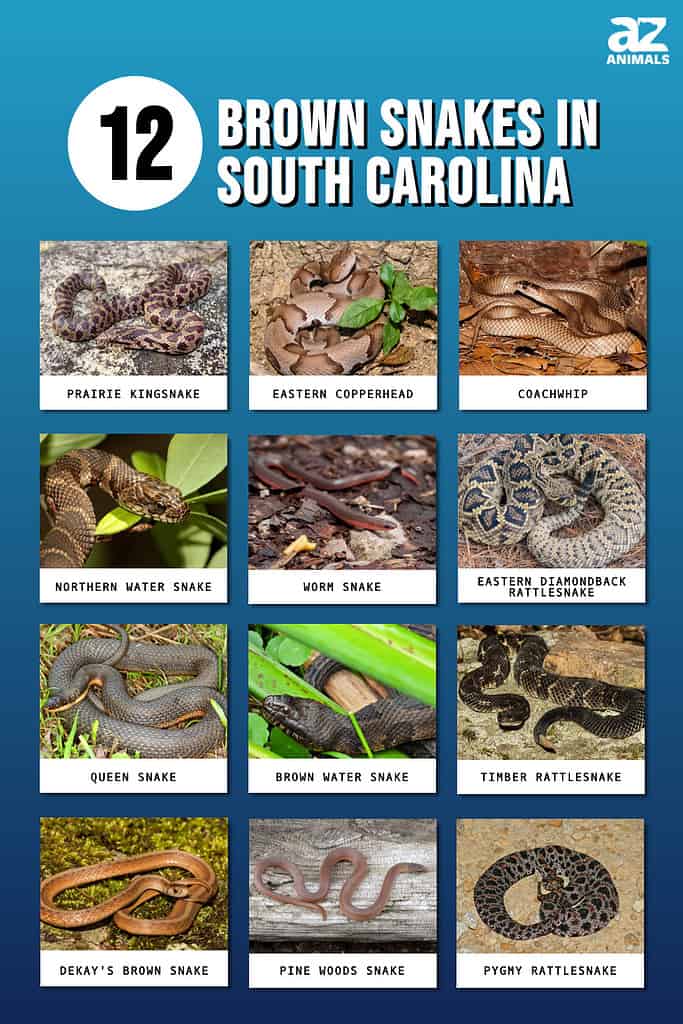
1. Prairie Kingsnake (Lampropeltis calligaster)
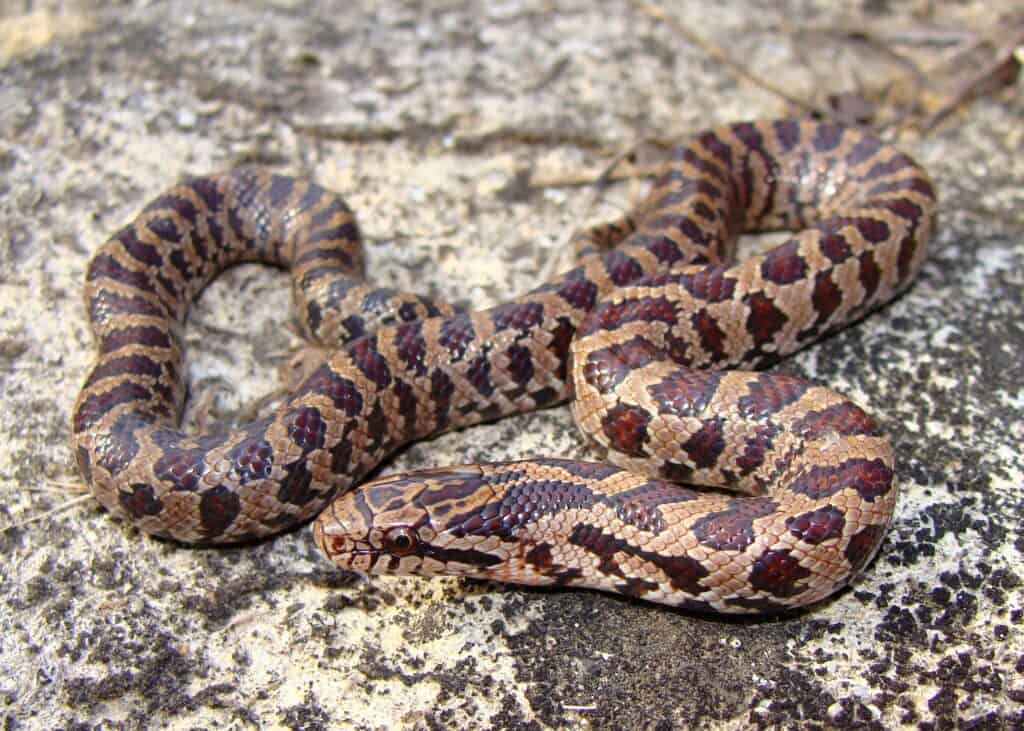
Prairie Kingsnake
(Lampropeltis calligaster).
©Matt Jeppson/Shutterstock.com
The first snake on our list is the prairie kingsnake which occurs statewide in a variety of habitats — including forests and fields. However, they are highly fossorial and spend a lot of their time underground. Prairie kingsnakes are 30 to 40 inches long and have light brown bodies overlaid with a series of dark brown blotches. They are also known as the yellow-bellied kingsnake due to their yellowish-colored belly. Prairie kingsnakes are not venomous but can sometimes mimic rattlesnakes by vibrating their tails in the leaf litter.
2. Eastern Copperhead (Agkistrodon contortrix)
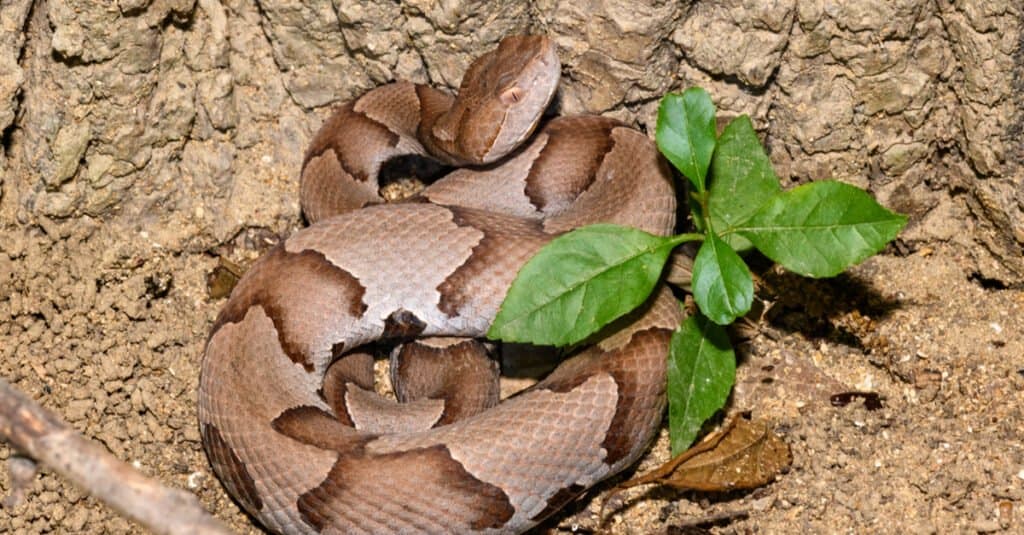
Eastern Copperhead
(Agkistrodon contortrix).
©Jeff W. Jarrett/Shutterstock.com
The first venomous snake we’re going to discuss is the eastern copperhead. Copperheads are 24 to 40 inches long and have a pinkish-tan body with large reddish-colored crossbands that appear in an hourglass pattern. They occur across the entire state, where they inhabit forests, mountains, rocky hillsides, and swamp edges. Copperheads are venomous, but it is fairly mild compared to some of the other snakes you might encounter. In addition, their bites are rarely fatal so long as anti-venom is administered.
3. Coachwhip (Masticophis flagellum)
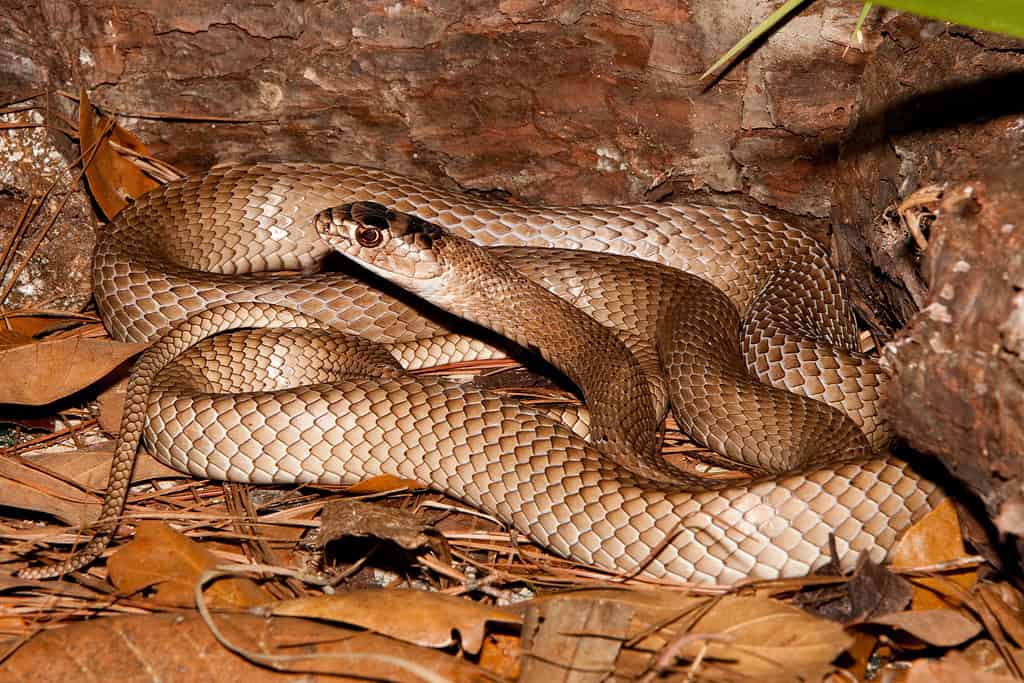
Coachwhip
(Masticophis flagellum).
©Jay Ondreicka/Shutterstock.com
One unique brown snake in South Carolina is the coachwhip. These snakes begin with a black head, and their color then lightens gradually along their body until it becomes a light tan at their tail. They are 50 to 72 inches long and have slender bodies with smooth dorsal scales. Coachwhips occur across most of the state, except for the mountainous region of the northwest. They prefer habitats with sandy soil — such as sandhills, coastal dunes, prairies, and pine forests. Legend has it that coachwhips chase people and whip them with their tails. Thankfully, this is just a myth, but they can be aggressive when disturbed and will repeatedly strike at the threat.
4. Northern Water Snake (Nerodia sipedon)
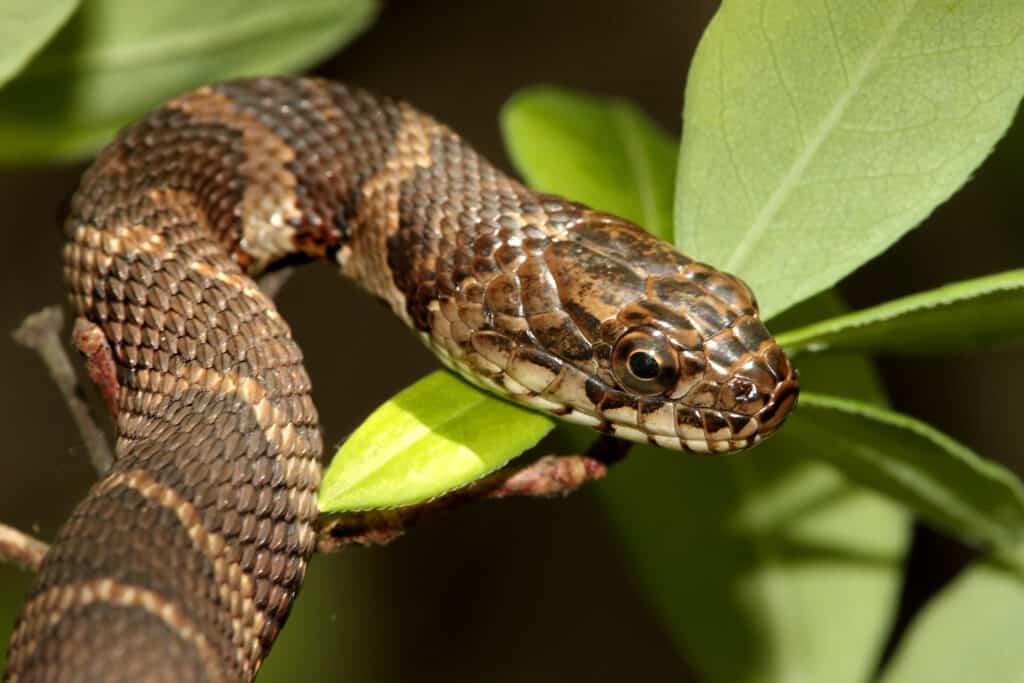
Northern Water Snake
(Nerodia sipedon).
©Steve Byland/Shutterstock.com
The first of several water snakes in South Carolina is the northern water snake. Northern water snakes are 24 to 55 inches long and have brown or tan bodies with dark brown or black square-shaped blotches. Northern water snakes inhabit the state’s northern region across the mountains and the Piedmont. They inhabit any body of freshwater and prey primarily on fish and amphibians. Although they are not venomous, they can be aggressive and can inflict severe wounds. Bites from these snakes tend to bleed a lot as their saliva has an anti-coagulant that prevents blood from clotting properly.
5. Worm Snake (Carphophis amoenus)
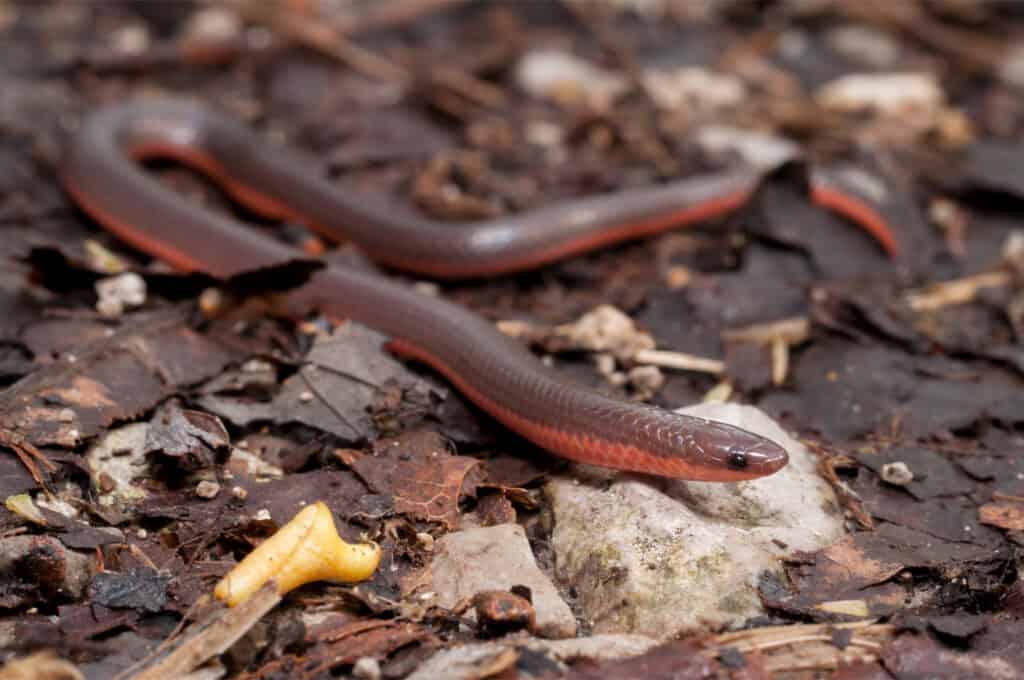
Worm Snake
(Carphophis amoenus).
©Mike Wilhelm/Shutterstock.com
A particularly small snake is the worm snake which is typically less than 13 inches long. These snakes have glossy brown dorsal scales and lighter pinkish-colored bellies. They live in deciduous forests and woodlands across the entire state, but they are fossorial and are rarely seen above the ground. Worm snakes prey almost entirely on earthworms which they are sometimes mistaken for. They are utterly harmless to humans, and when handled, their only defensive action is to press the pointed tip of their tail against the hand.
6. Eastern Diamondback Rattlesnake (Crotalus adamanteus)
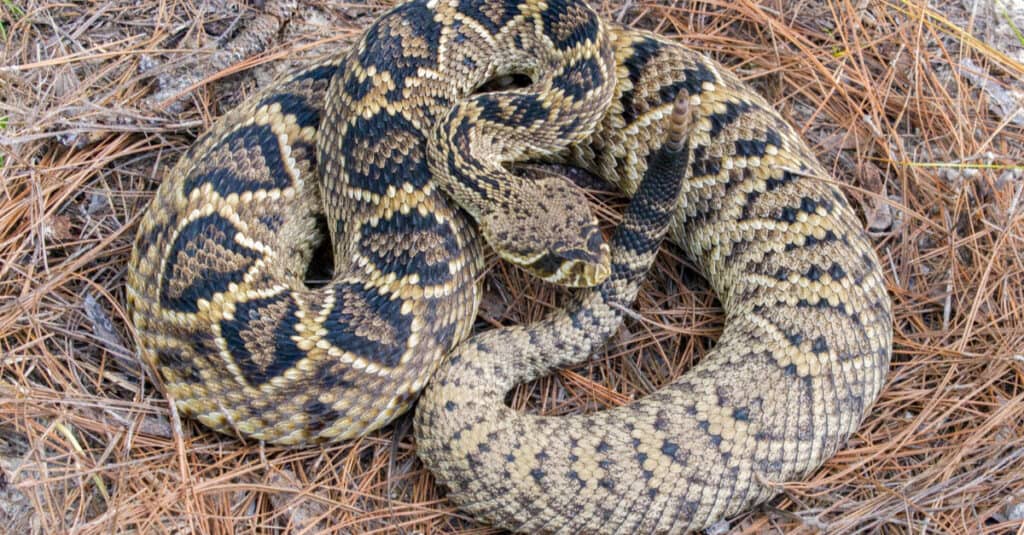
Eastern Diamondback Rattlesnake
(Crotalus adamanteus).
©Chase D’animulls/Shutterstock.com
Occurring mainly across the Coastal Plain, the eastern diamondback rattlesnake inhabits coastal dunes, hardwood hammocks, and pinewoods. They are the largest brown snake in South Carolina and are typically 33 to 72 inches long, although larger specimens can easily reach 90 inches. Eastern diamondback rattlesnakes are tan or brown with large, dark diamond markings. The diamonds are often outlined with a lighter color, making them more distinctive. Eastern diamondback rattlesnakes are ambush predators and prey mainly on small mammals. They are one of the most dangerous snakes in North America and have an average venom yield of 400 to 450mg. A lethal dose for humans is only 100 to 150mg.
7. Queen Snake (Regina septemvittata)
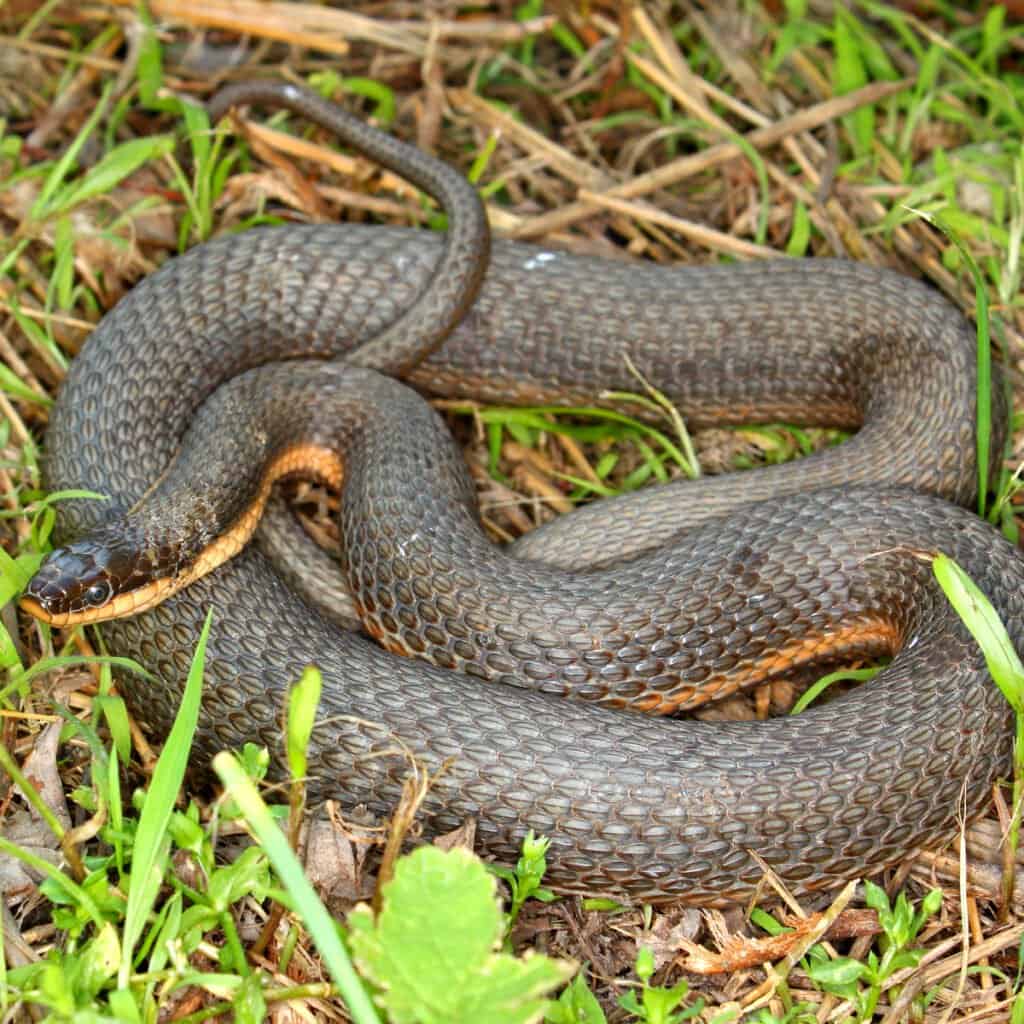
Queen Snake
(Regina septemvittata).
©Jason Patrick Ross/Shutterstock.com
Another aquatic snake is the queen snake which features some unique adaptations to help it live and hunt in rocky-bottomed streams and ponds. They have a flattened head and a series of thickened scales underneath their chin and on the top of their head. These features help them to hunt for crayfish underneath and between rocks. Queen snakes are around 24 inches long and have brown bodies. They also have three very faint dark stripes running along their back, two lighter stripes along their sides, and four stripes on their yellowish belly. In South Carolina, they live in the Piedmont and mountainous regions.
8. Brown Water Snake (Nerodia taxispilota)
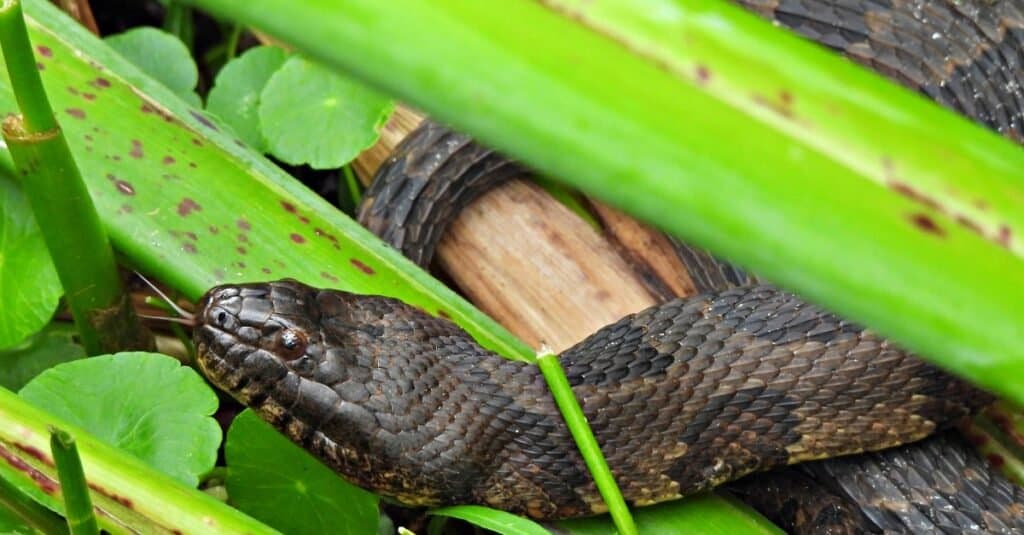
Brown Water Snake
(Nerodia taxispilota).
©iStock.com/passion4nature
Next, we have brown water snakes that occur across most of the state but are absent from the mountains in the northwestern region. Brown water snakes live in most freshwater habitats but prefer flowing water like streams and rivers. They can sometimes be seen basking on the riverbanks or hanging from the overhanging vegetation but are always quick to flee back into the water. They are ambush predators and primarily prey on small catfish. Brown water snakes are 30 to 60 inches long, and, like northern water snakes, they have brown bodies with darker blotches. However, brown water snakes have square blotches on their backs and alternating rows along their sides.
9. Timber Rattlesnake (Crotalus horridus)
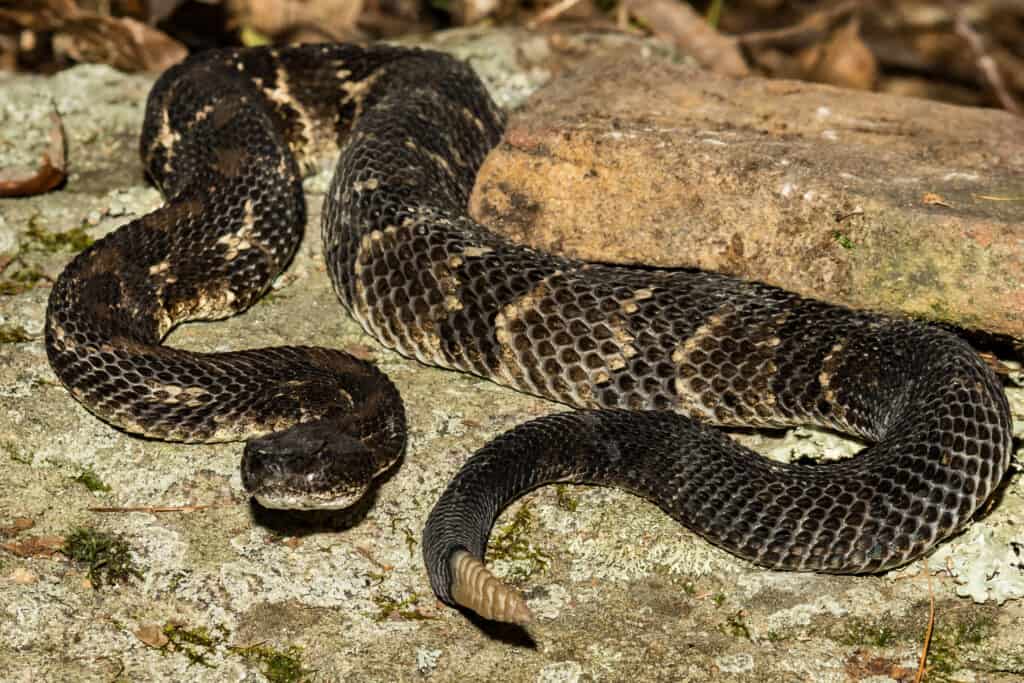
Timber Rattlesnake
(Crotalus horridus).
©iStock.com/JasonOndreicka
The next venomous brown snake in South Carolina is the timber rattlesnake, sometimes called the canebrake rattlesnake. Timber rattlesnakes are thick-bodied, powerful snakes and can reach lengths of around five feet. They are typically brown with a series of darker brown crossband markings. However, there is also a “black phase” color morph whereby the ground color is dark brown to black with still darker crossbands — rendering the snake almost entirely black. Timber rattlesnakes are one of the most dangerous snakes in the state as they possess a large amount of strong venom. However, this is somewhat counteracted by their relatively mild nature. Timber rattlesnakes live across the whole state in forests and rocky hillsides.
10. Dekay’s Brown Snake (Storeria dekayi)
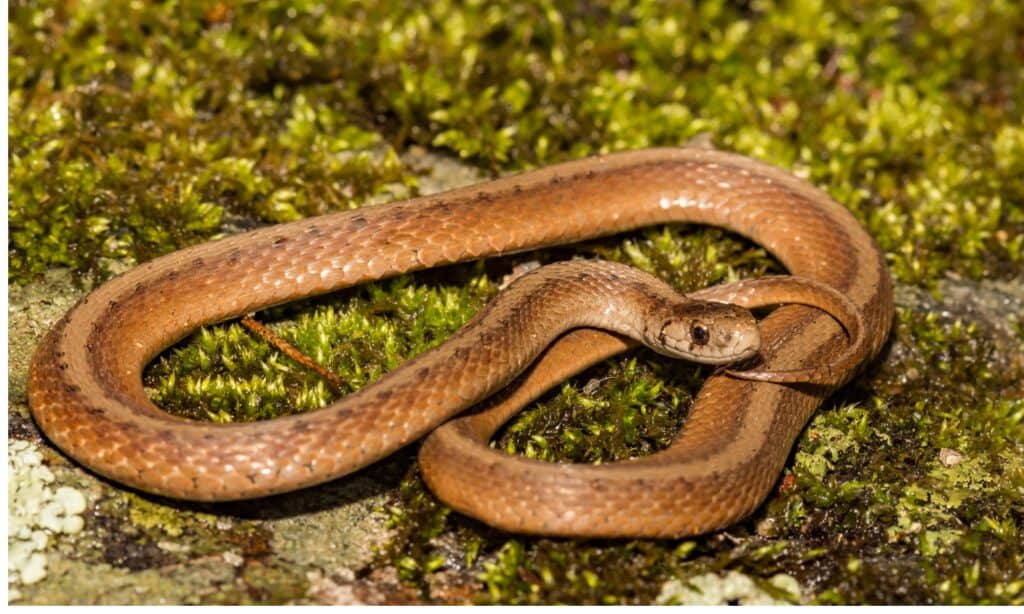
Dekay’s Brown Snake
(Storeria dekayi).
©iStock.com/JasonOndreicka
One of the smallest snakes in South Carolina is Dekay’s brown snake which has a maximum length of just 13 inches. Dekay’s brown snakes are brown with lighter-colored bellies. They also have two rows of small black spots along their back. Dekay’s brown snakes occur statewide in forests, floodplains, and around swamp edges. They are shy, secretive snakes and spend a lot of their lives hidden in the leaf litter. They are not dangerous and prey mainly on earthworms and slugs.
11. Pine Woods Snake (Rhadinaea flavilata)
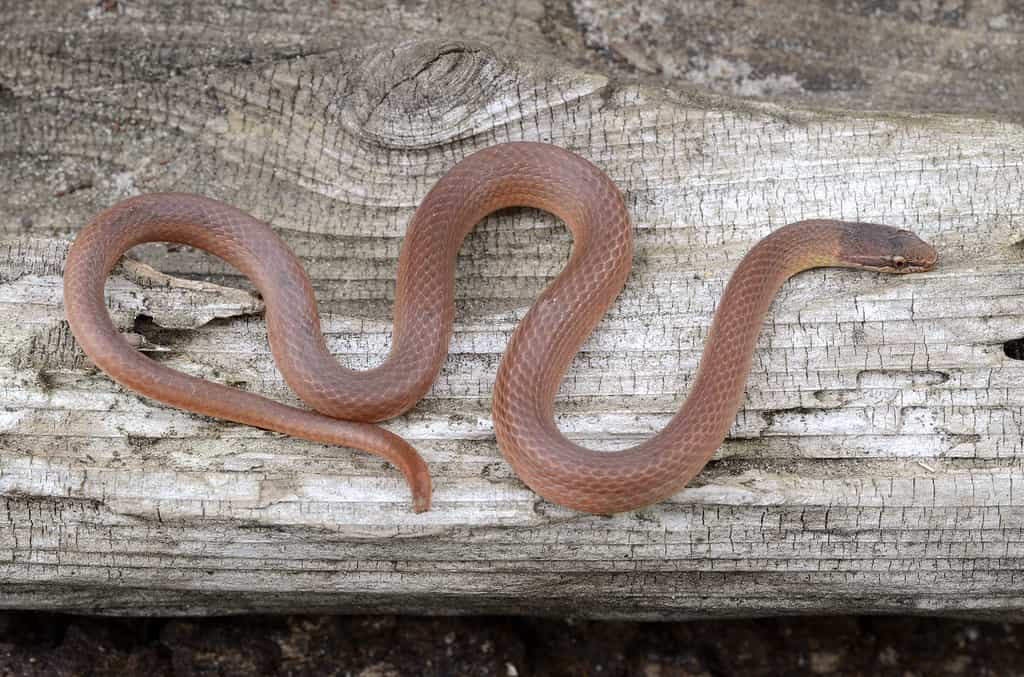
Pine Woods Snake
(Rhadinaea flavilata).
©Patrick K. Campbell/Shutterstock.com
The pine woods snake is a small fossorial snake that lives in the state’s southeastern region. Pine woods snakes typically live in pine flatwoods, where they can burrow into loose soil or in the leaf litter. They are 10 to 13 inches long and have reddish to golden brown bodies with slightly darker heads. They also have yellow scales on their upper lip, which earns them the other common name of the yellow-lipped snake. Pine woods snakes prey mainly on frogs, lizards, and salamanders. Although they are not dangerous to humans, they have mildly venomous saliva, which they chew into their prey.
12. Pygmy Rattlesnake (Sistrurus miliarius)
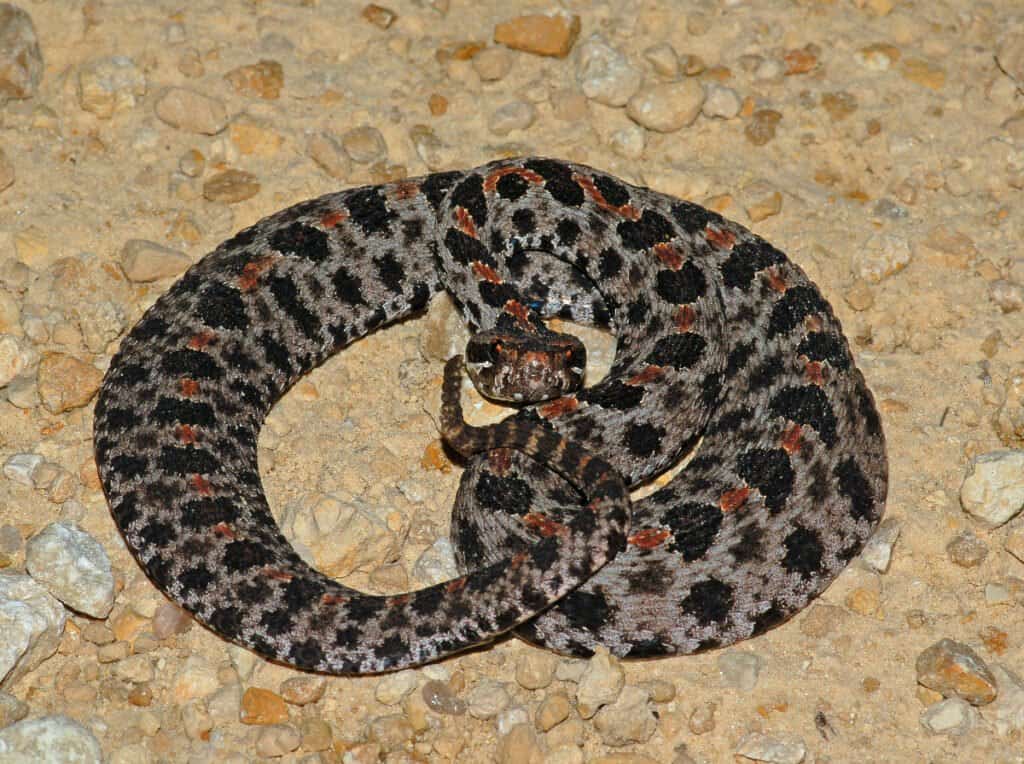
Pygmy Rattlesnake
(Sistrurus miliarius).
©Gerald A. DeBoer/Shutterstock.com
The final snake on our list is the pygmy rattlesnake, the smallest venomous snake in the state, only 14 to 22 inches long. Pygmy rattlesnakes are light brown to gray with dark brown or black blotches. They also have a reddish-brown stripe running down the center of their back. Due to their small size, pygmy rattlesnakes only have a small rattle which is often inaudible. They also produce only a small amount of venom, which means that bites from these snakes are rarely fatal. Pygmy rattlesnakes live right across South Carolina in pine flatwoods, prairies, and along the edges of swamps and marshes.
Summary of 12 Brown Snakes Slithering Around South Carolina
| Snake | Scientific Name | |
|---|---|---|
| 1 | Prairie Kingsnake | Lampropeltis calligaster |
| 2 | Eastern Copperhead | Agkistrodon contortrix |
| 3 | Coachwhip | Masticophis flagellum |
| 4 | Northern Water Snake | Nerodia sipedon |
| 5 | Worm Snake | Carphophis amoenus |
| 6 | Eastern Diamondback Rattlesnake | Crotalus adamanteus |
| 7 | Queen Snake | Regina septemvittata |
| 8 | Brown Water Snake | Nerodia taxispilota |
| 9 | Timber Rattlesnake | Crotalus horridus |
| 10 | Dekay’s Brown Snake | Storeria dekayi |
| 11 | Pine Woods Snake | Rhadinaea flavilata |
| 12 | Pygmy Rattlesnake | Sistrurus miliarius |
The photo featured at the top of this post is © iStock.com/Wide-River-Rick
Discover the "Monster" Snake 5X Bigger than an Anaconda
Every day A-Z Animals sends out some of the most incredible facts in the world from our free newsletter. Want to discover the 10 most beautiful snakes in the world, a "snake island" where you're never more than 3 feet from danger, or a "monster" snake 5X larger than an anaconda? Then sign up right now and you'll start receiving our daily newsletter absolutely free.
Thank you for reading! Have some feedback for us? Contact the AZ Animals editorial team.






